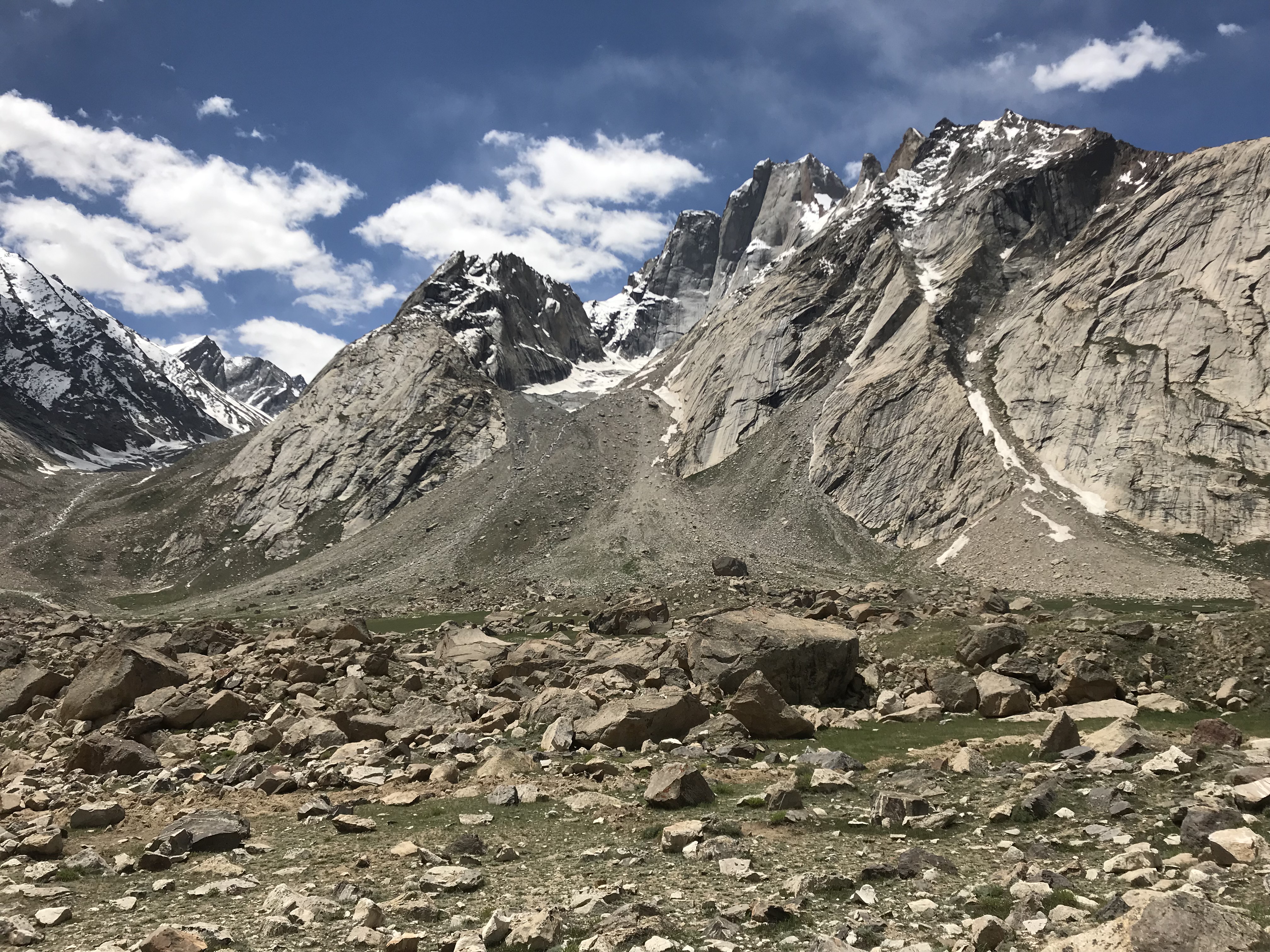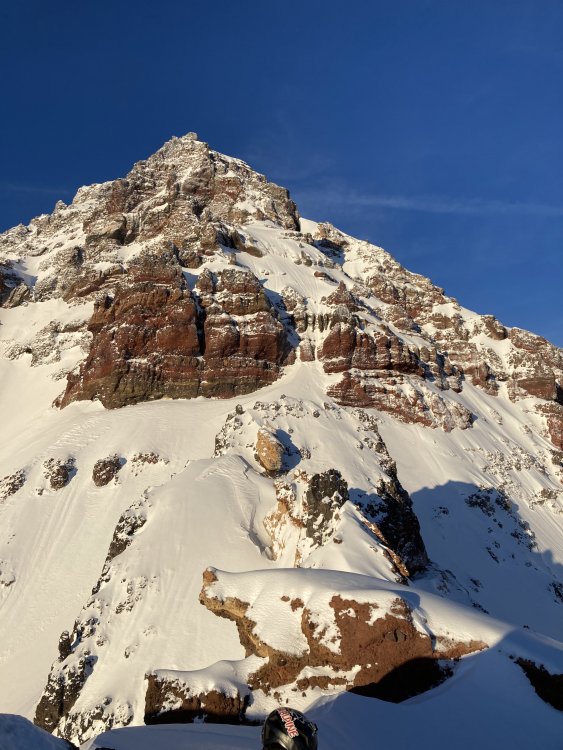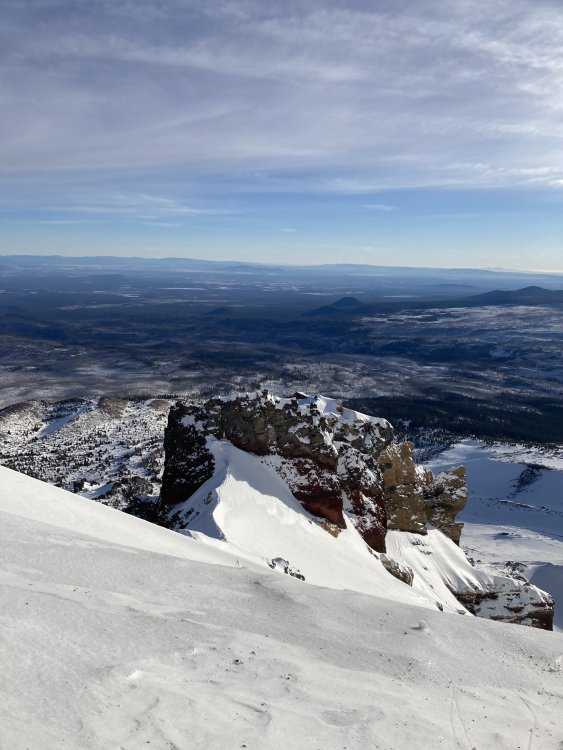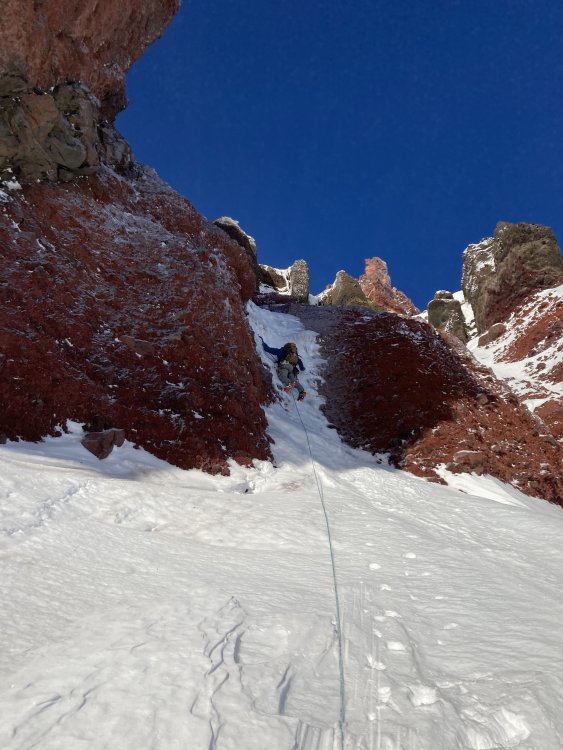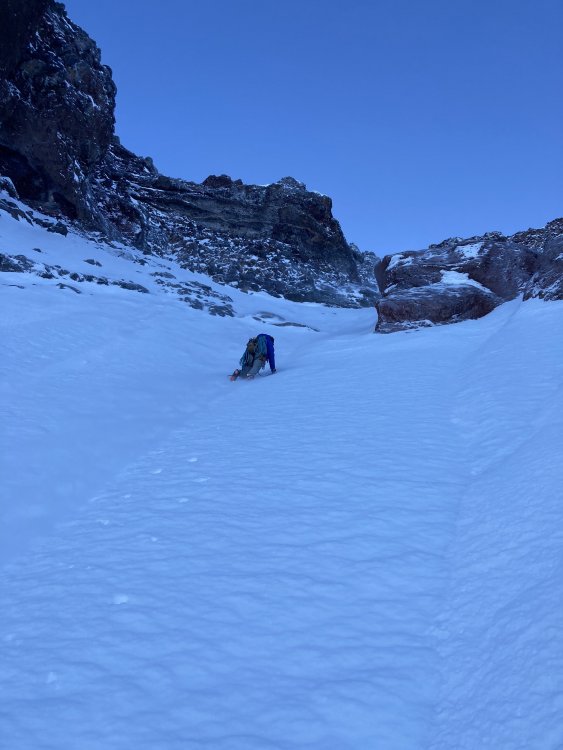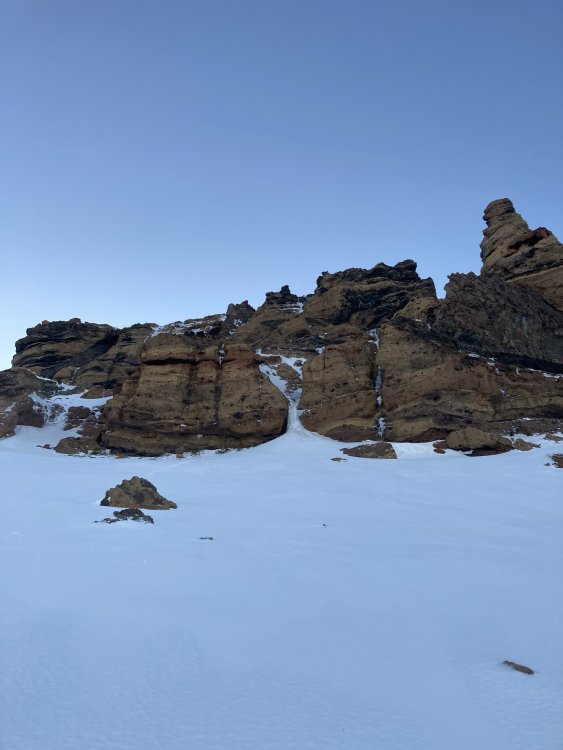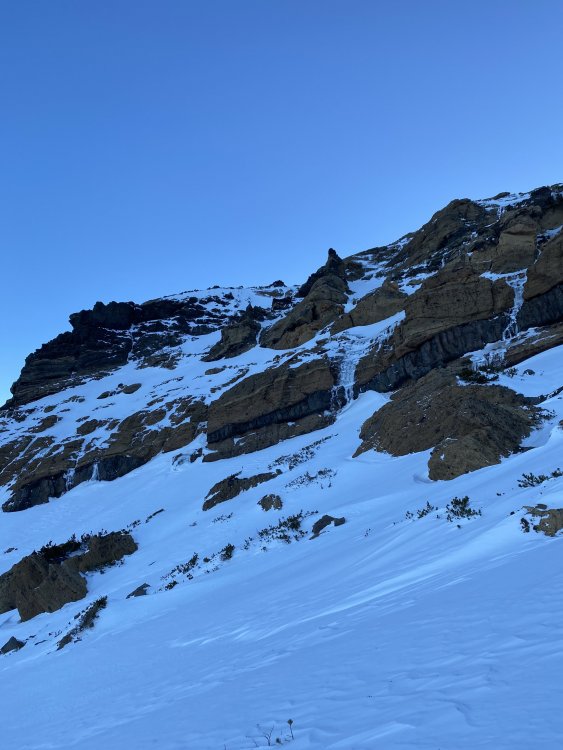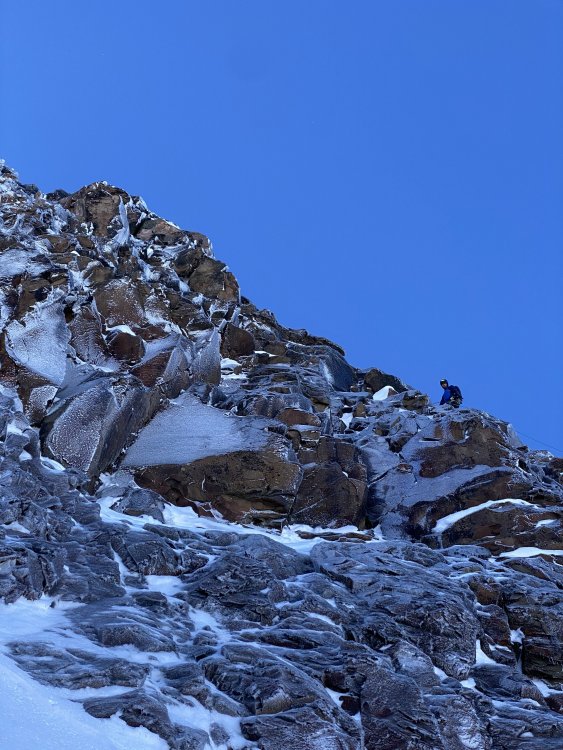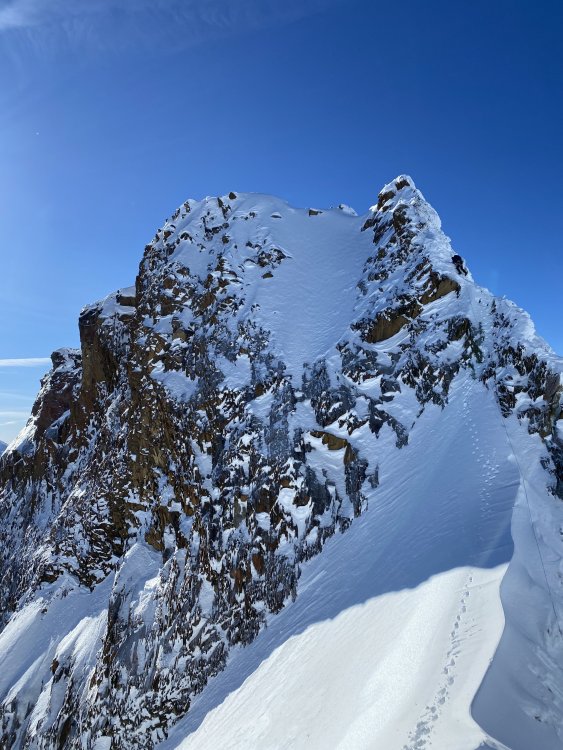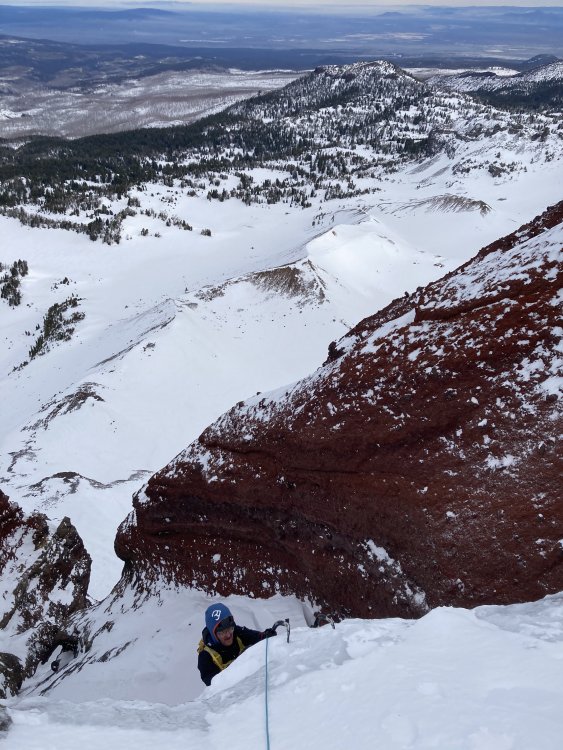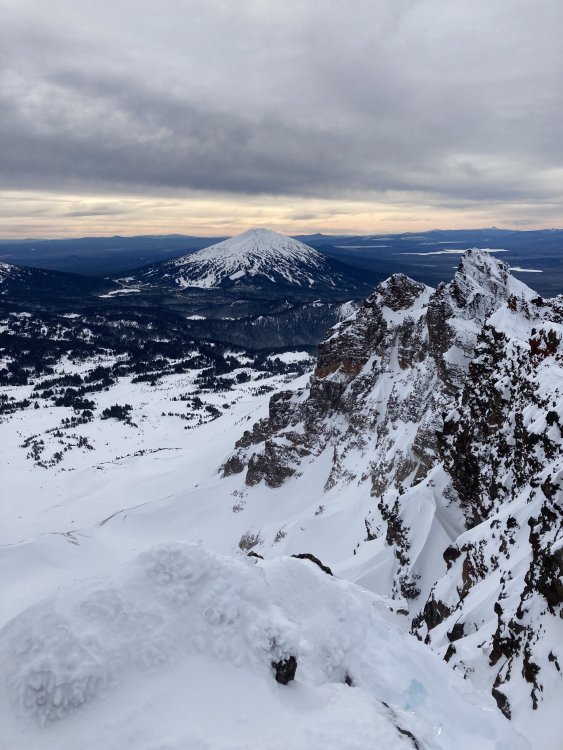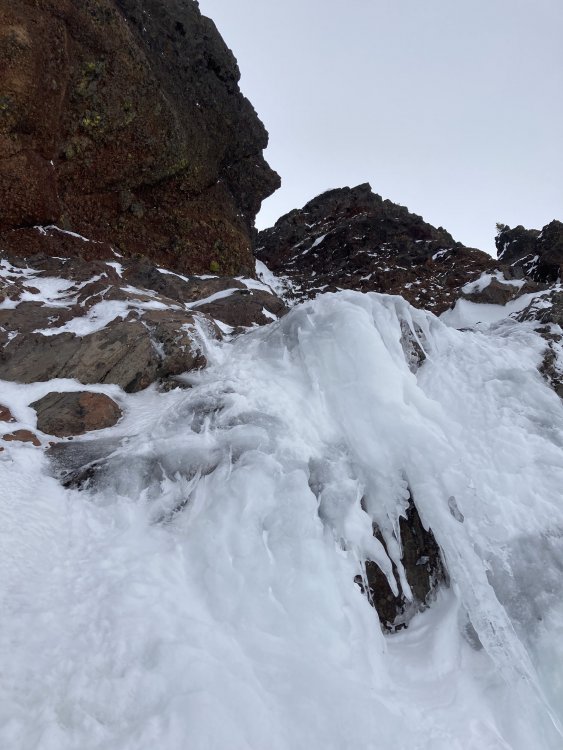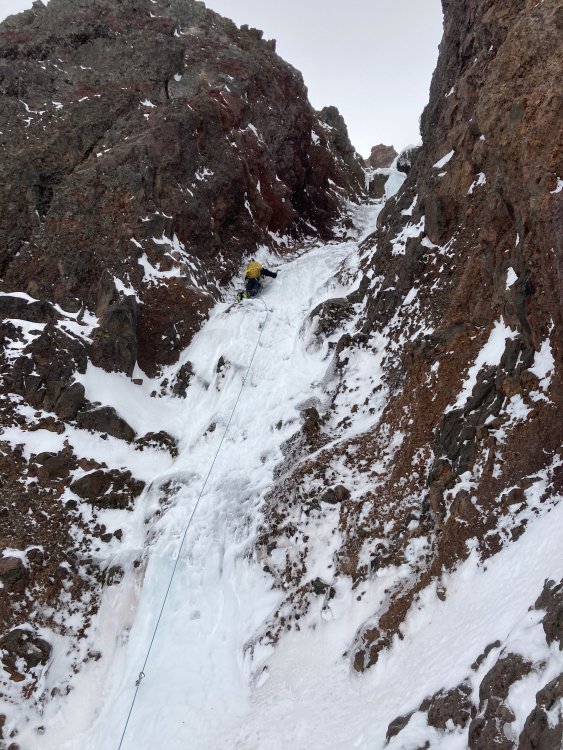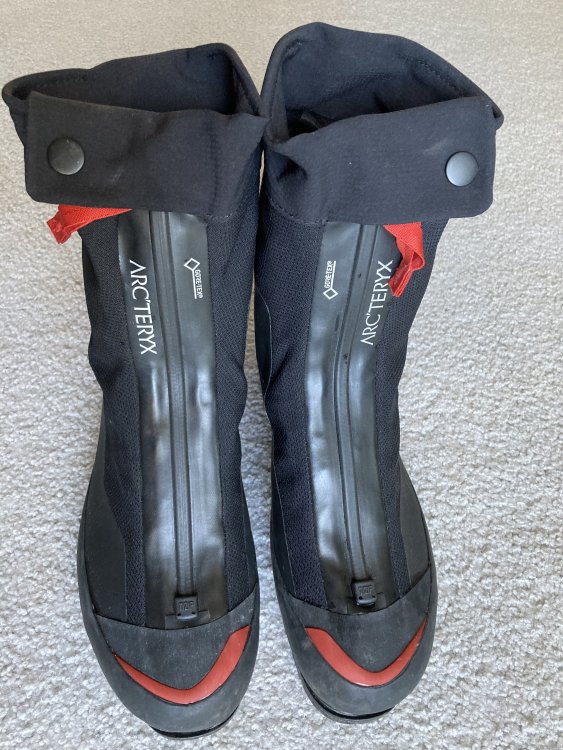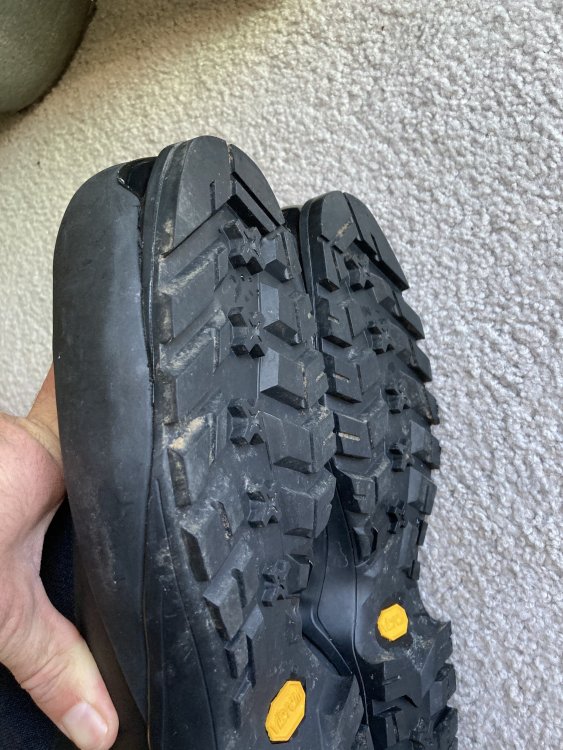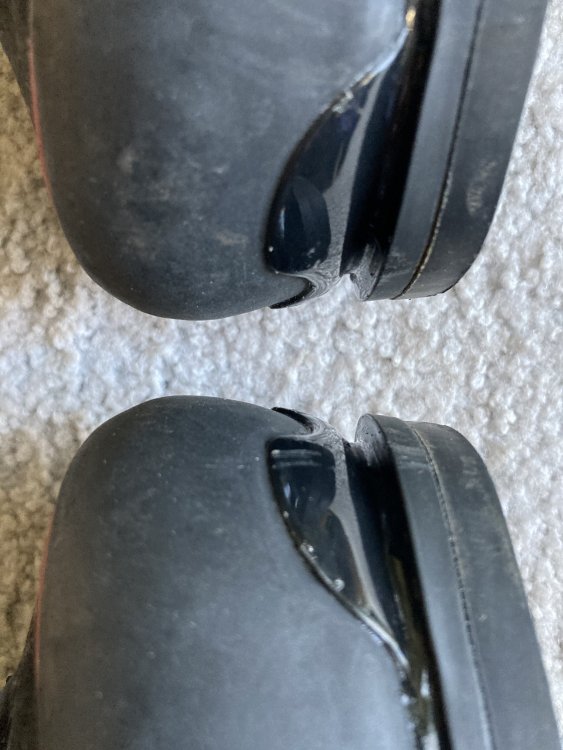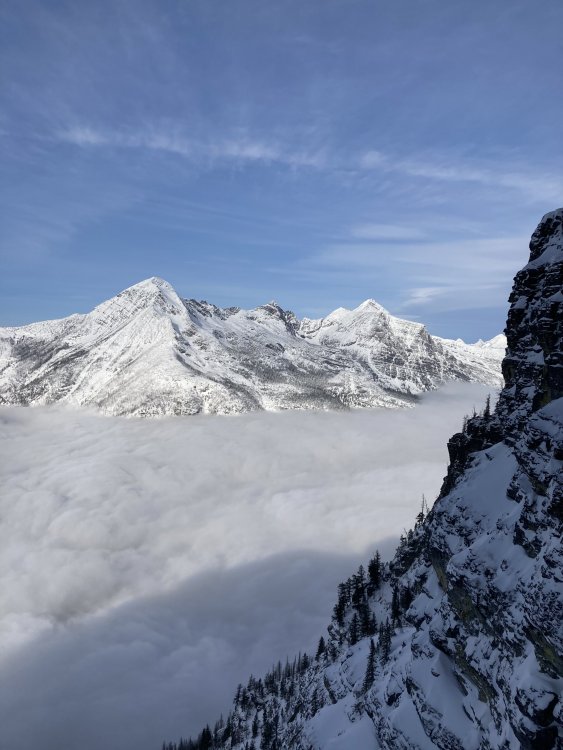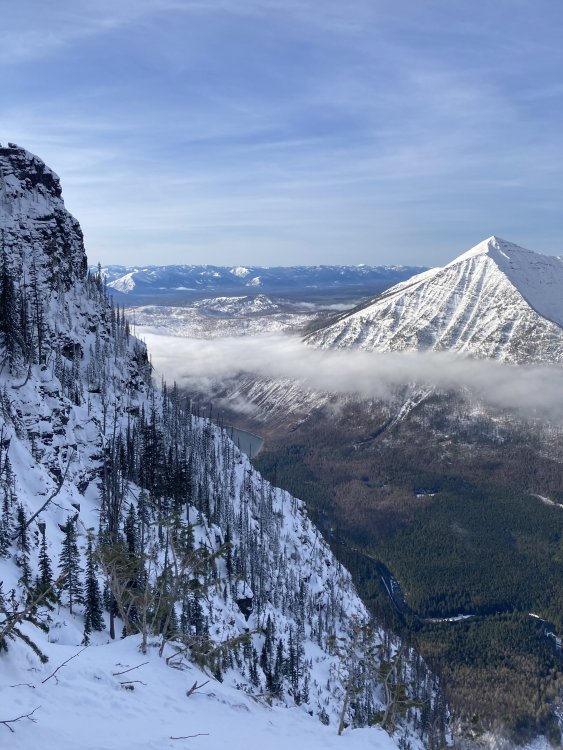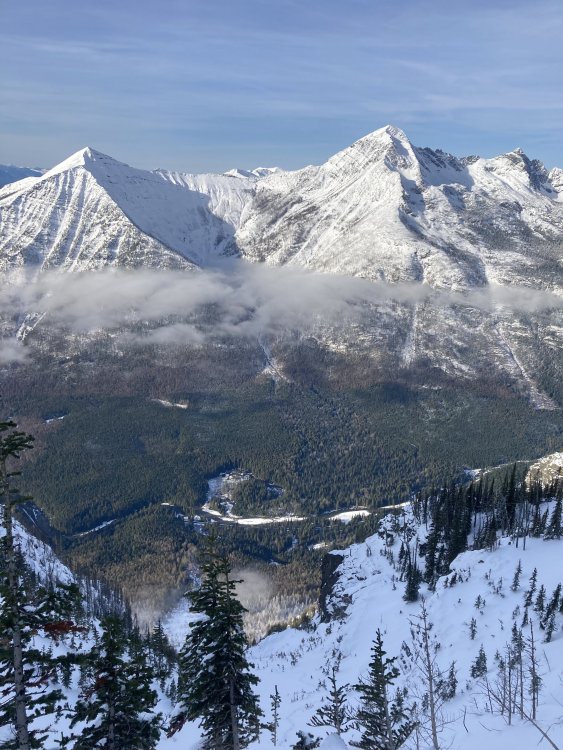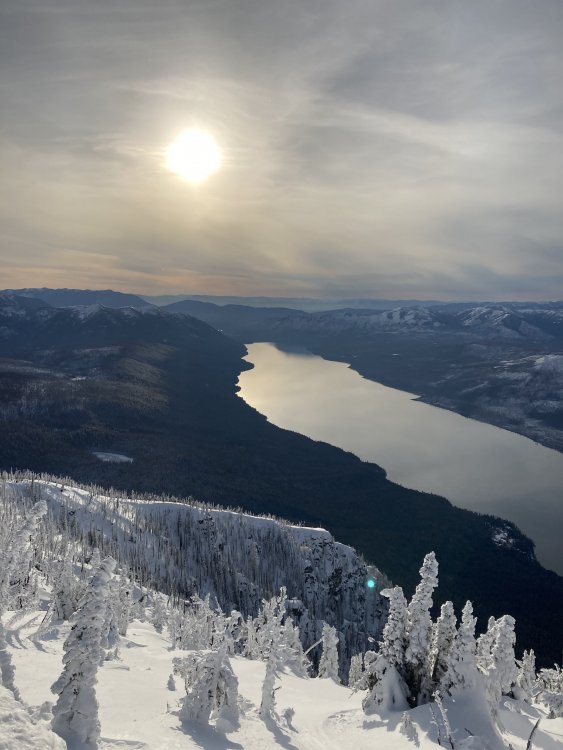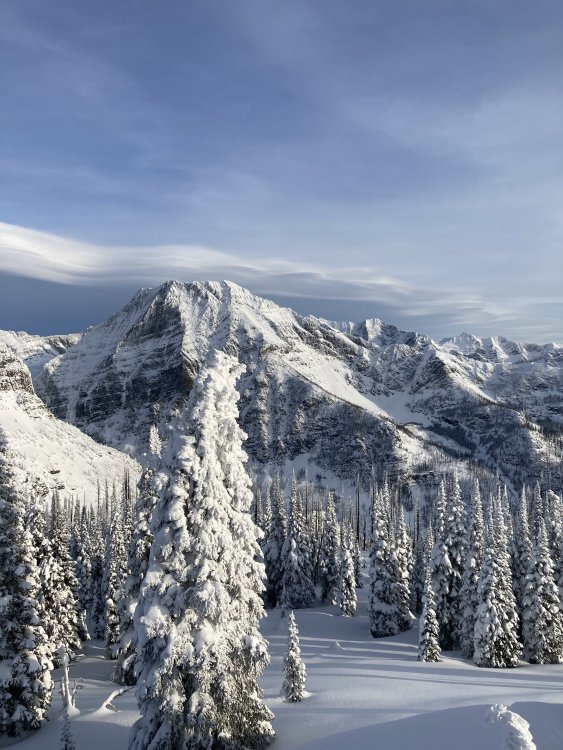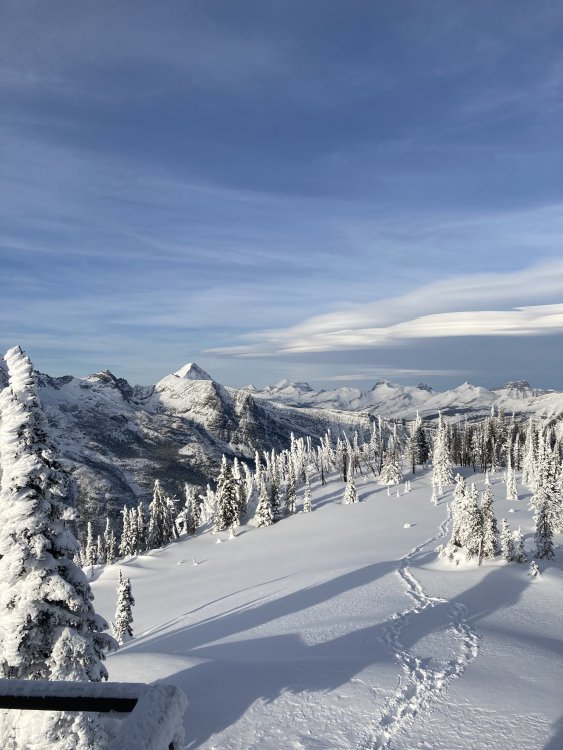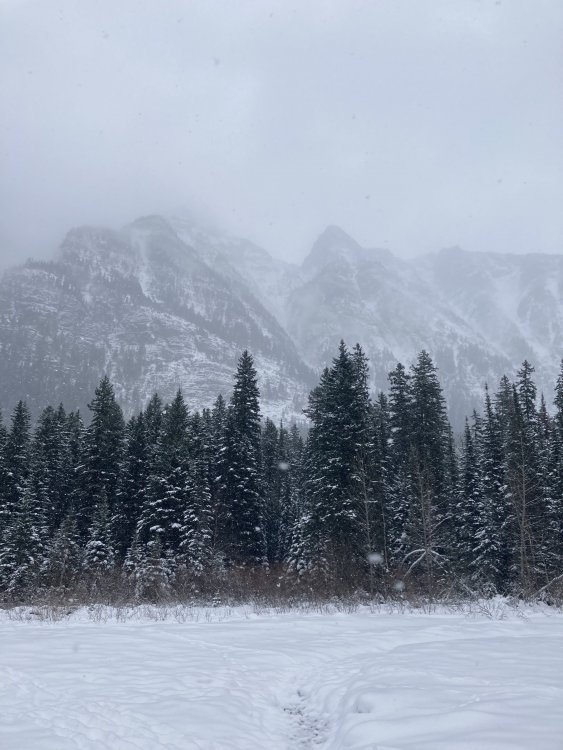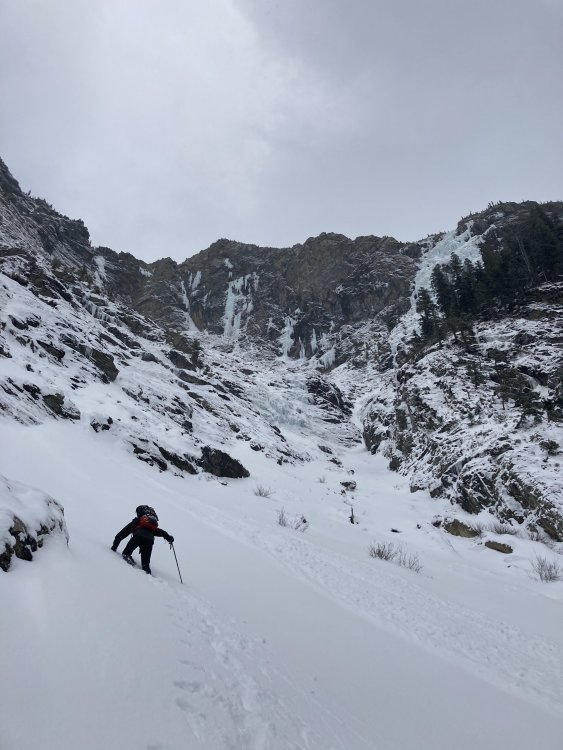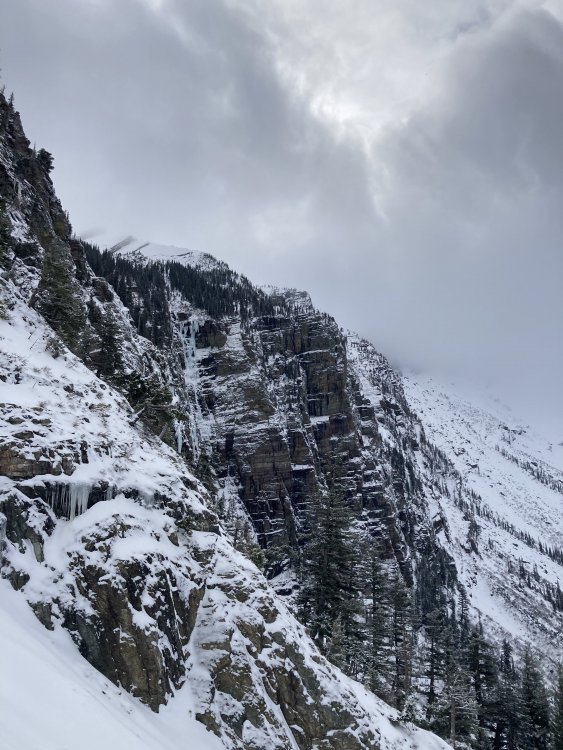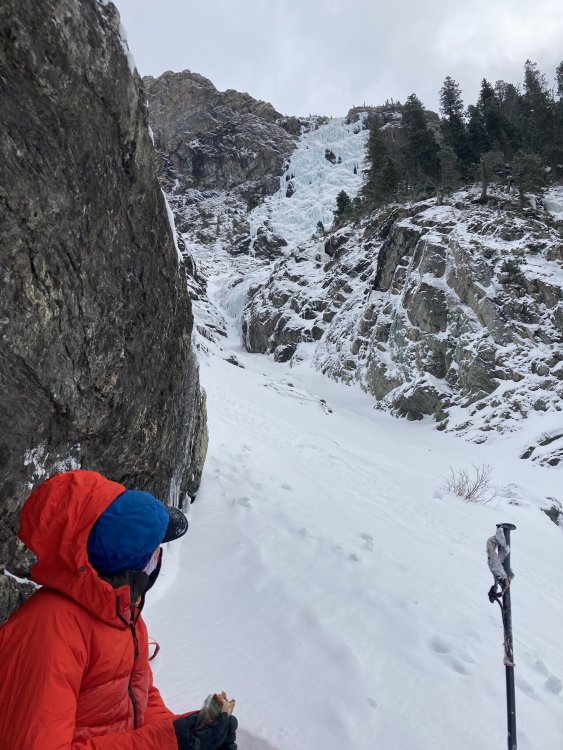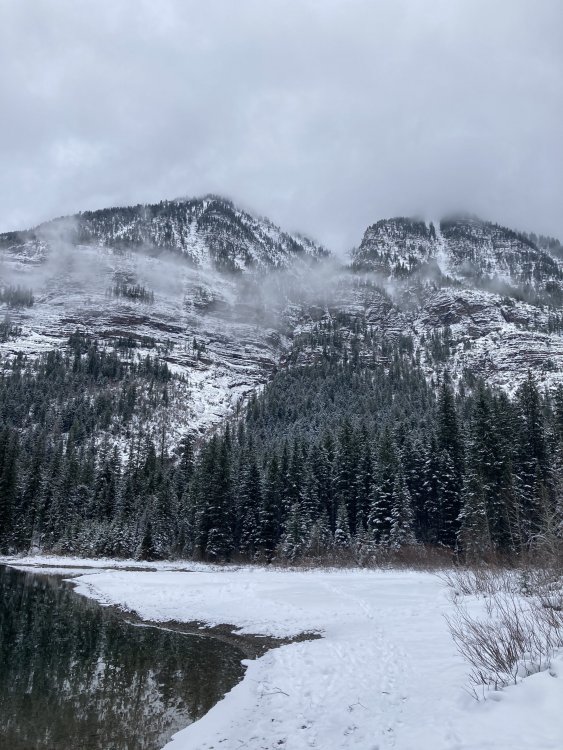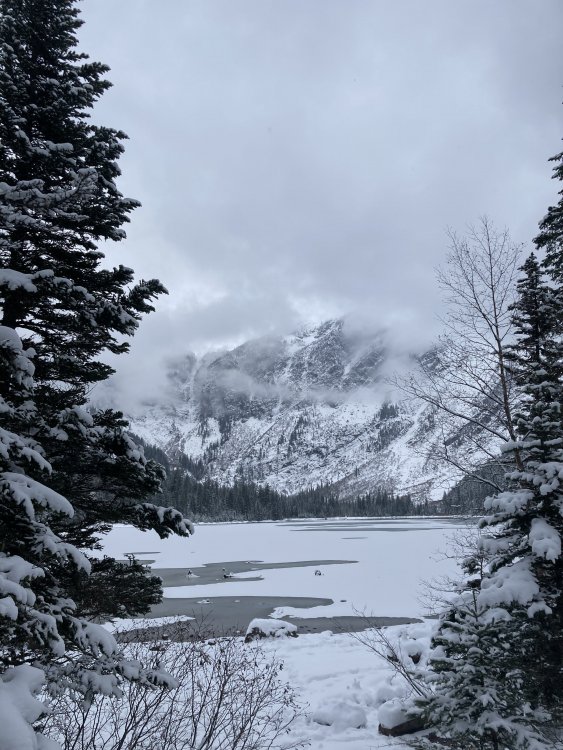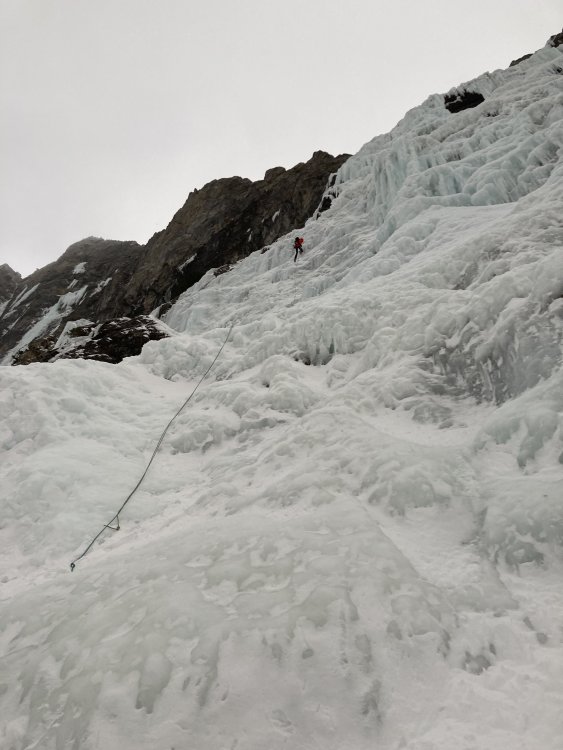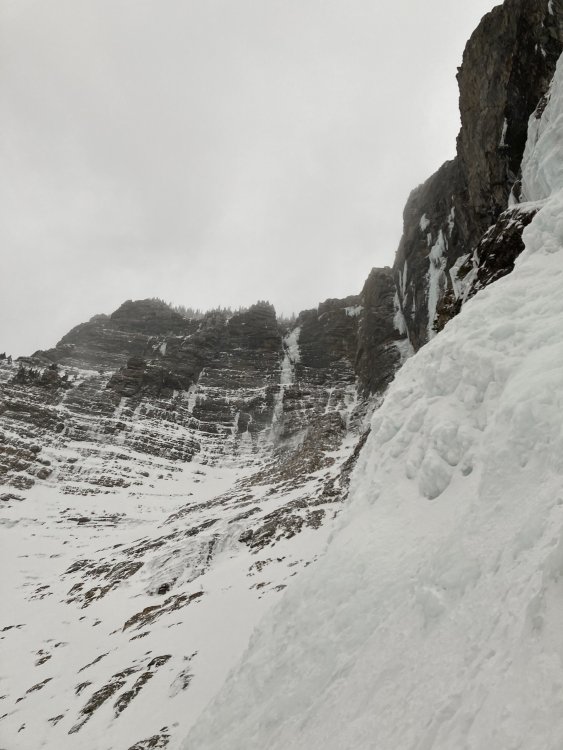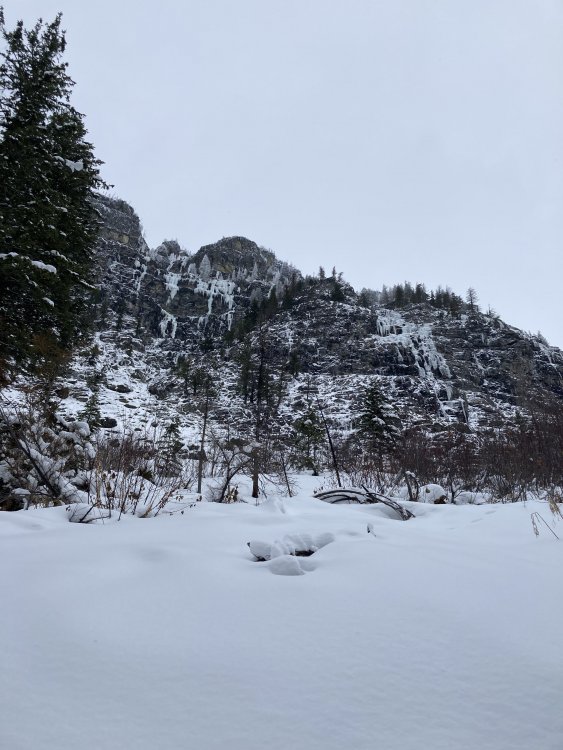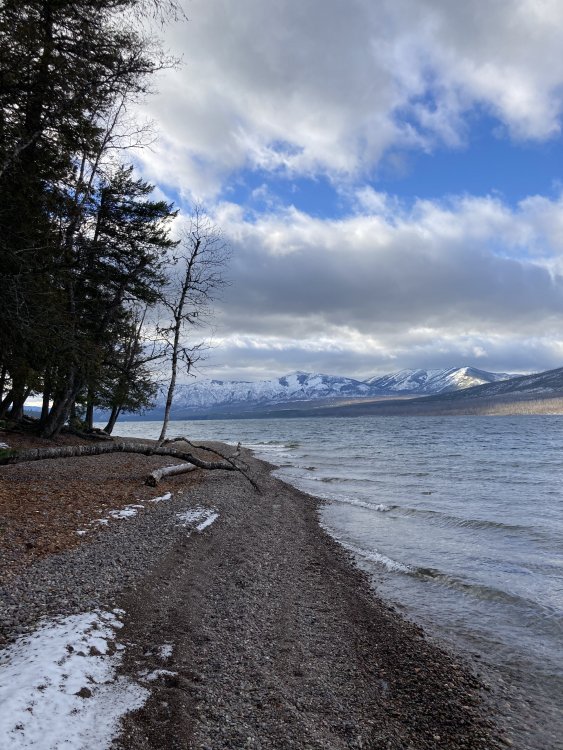-
Posts
523 -
Joined
-
Last visited
-
Days Won
55
Content Type
Profiles
Forums
Events
Everything posted by bedellympian
-
Green lines (I'm pretty sure) are relative humidity as a %, so yes cloud cover/precip in essence. I always use the 4km to be honest and don't understand the difference between the 12 and 4. The 4/3 looks like a shorter time frame than the 12 and 4, and the 12 looks like it has a little less detail than the 4km. I know TMG uses the 4km at Troutdale for all their guiding on Hood.
-
Every xx/00 to xx/12 is 12 hours, it covers 84 hrs.
-
x-axis starts on the R and goes back L (counter intuitive right?) and is in xx/yy format. xx is the date. yy is the hour in UTC (8 hours ahead of us in winter and 7 in summer so 00=4pm PST and 12=4am PST). basically you just look for the date and the 12 which is about when you'd be heading up with an alpine start most days. If its white (clear) above and to the L of that then its clear skies.
-
I've been aware of UW's time-height forecasting system for a while but really started using it this year. There have been several days where NOAA pt predicts clouds or high winds but the time-height shows its calm and clear above 5-6k' and its right on. Reading them takes some getting used to, they are definitely not the most user friendly, but once you've practiced a bit it's easy enough. Time goes from R-L on the x-axis in UTC (date/hour, 00=4pm PST day before and 12=4am day of), elevation is on the y-axis in mbar pressure (800 is aprox 6k', 700 = 10k'). Green = clouds/precip, arrows = wind (more fletchings = more wind, they point in the compass direction), temp is deg C shown in red lines ("0" line is the freezing level). Here is the link to a map of the time-heights. Click on the location down wind of where you want to go. Look for white above 800mbar with small wind arrows, there's your window. https://a.atmos.washington.edu/mm5rt/rt/timeheights_d3.cgi?GFS+current_gfs+
-
You are aware of the problems with this strategy, yes? https://www.amazon.com/review/R2JGNJ5ZPJT4YC
-
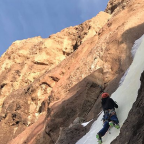
Wy'East Gear and Experience Requirements: Should I climb it?
bedellympian replied to GranolaEater93's topic in Newbies
Agreed, SS of Hood is definitely a step up from Adams, South Sister, Helens. If that feels comfortable and easy for you then consider Wy'east. Also, worth finding some steep snow with a big flat area of soft snow beneath it and building some anchors in that and practicing your skills. Try different things and try to make your tool placements and pickets fail. Realize that snow is super variable, but despite that this will give you a great idea of what you can/can't get away with. -

[TR] Broken Top - Richardson-Rocket Link-up 12/29/2020
bedellympian replied to bedellympian's topic in Oregon Cascades
Here is a rough approximation of our route in caltopo for those interested... https://caltopo.com/m/B36T Also, for those without a sled, this would definitely be doable with a skinning approach. I've certainly done individual routes on BT in an ~8hr car-to-car this way and you can also camp out near the peak as I've done several times. -

[TR] North Sister - Complete East Buttress 12/23/2020
bedellympian replied to bedellympian's topic in Oregon Cascades
Here are some more pictures... The upper buttress from just before you down climb to the R on the lower buttress, you can see the double ice gullies that start the upper and the black gendarme on the ridge ahead. Landon enjoying the view S before we start the upper. Looking back at the lower, you can see the cliff you rappel, just R of the snow crest. Landon leading the ice starting the upper. Me leading the headwall on Glissan Pinnacle. Me leading the summit pinnacle pitch. Landon down climbing EMC. Ice options on the N side of the lower buttress. It could be a fun cragging mission in and of itself when its fatter later in the season. Bottom of the lower. The first pitch climbs the obvious short pillar, then you go up and right between the tower and cliffs. -
Trip: Broken Top - Richardson-Rocket Link-up Trip Date: 12/29/2020 Trip Report: The Routes: The Full Richardson is an ice route on the N side of Broken Top. First ascent by Clifford Agocs with Brandon Seymore. It is essentially one 35m pitch of WI4+ up the headwall of an amphitheater that you pass through on the North Buttress Route (listed in Oregon High). If this route were listed in Winter Dance it would probably be described as 150m WI4+ (pitch 1 optional WI3 30m or climb around on snow ramp, pitch 2 WI2 50m up the gully, steep snow up to the headwall, pitch 3 WI4+ 35m, rappel or climb steep snow up and right to a walk off) The amphitheater seems to be producing more ice in recent years as winter temps increase. It was attempted several times by other locals starting in the 90's but rarely found in climbable condition. Based on what I saw on this outing, it seems that there are at least 5 possible routes for the confident smear/mixed leader. Here is a picture of me leading the main pitch... The Rocket Launcher (has definitely been climbed by Pete Keane who calls it Rocket Launcher, this might also be called Cold Sweat FA by Aaron Lish, but that might be a different line, we're trying to track down more info) is a finicky ice line on the East face of Peak 9094 (Broken Top's South summit). Because it is in the Crook Cirque (the so-called crater) which is a South facing glacial bowl and East facing, it can be hard to find in good condition. It starts up some easy ice mixed ledges for ~50m (exposed WI2/3 when fat) and then climbs a beautiful gash feature which is steeper than it looks into a hanging bowl (55m WI4, probably deserves an R rating most of the time). From there the obvious course of action is to just climb the easy snow for 90m to the summit ridge (often corniced), and then either head up to your R and tag the 9094 summit or down and L until you can down climb open snow slopes to the valley below the glacial moraine. Here is a recent picture... Our day: Clifford Agocs and I used a sled to get to the wilderness boundary by Ball Butte just before dawn. We opted to boot (not recommended, but our desired linkup and Landon's success booting on the rain crust on our North Sister climb the week before convinced use it would be okay, it was just okay). We hiked around BT via No Name Lake to the Bend Glacier and transitioned to crampons etc. at the base of the North Buttress Couloir. We soloed the approach pitches to the base of the Full Richardson and I got the sharp end as Cliff had already snagged the FA. Ice was in difficult condition (brittle but sticky to get the tool out again), definitely solid 4+ in the Rockies, Cody, etc. similar to steepness to leading Cleo's at Hyalite when it's fat but without the hooks. On top anchor options were limited. I dug down, bottomed out some screws in decent ice and tied them off. We then unroped and front pointed the snow up to the summit pinnacle and followed the standard scramble to the summit. We down climbed the summit and made one short rappel, then we traverse the W face to the top of the 11 O'clock Couloir. We tried to saw the cornice with the rope but its a big ice block with the weather we've had so Cliff body belayed me down next to it to check the snow before we both committed to down climbing. Once in the crater we traversed over to the base of the Rocket Launcher and soloed the first few steps until aerated ice and snice over some steeper/exposed rock made us rope up. I lead ~15m to a belay stance just R of the the crux pitch (left a fixed pin for ya). Cliff lead the next pitch in lovely spindrift conditions which started on good WI4, involved stemming through vertical snice, and climbing easier alpine ice up to a short vertical pillar. The pillar was pretty awkward so he brought me up and I got to lead the vertical ice into overhanging rock with an awkward move left, digging through snow for a stick and hooking a blob on the overhang to skate my way through (not hard per se, but definitely some of the more awkward ice I've climbed). I made a belay in some rock 15m up and then we simuled the snow up the bowl and gully above to the ridge. We hiked back to the sled in the fading light. Luckily the increasing winds were at our back, though the variable drifts made for some frustrating post-holing at times. Roughly a 12hr car-to-car. Pictures: Leading the Richardson... Cliff topping out Richardson... BT summit shot, Rocket Launcher climbs a hidden cleft on the L face of the peak on the R (Peak 9094)... Approach ice on the Rocket Launcher. You can just see the main ice in the cleft in the upper middle of the photo... Cliff leading the main pitch on Rocket Launcher, he's just above the difficult snice section and you can see the awkward pillar poking into view at the top of the gully... Gear Notes: 1x stubby, 4x 13cm, 3x 16cm, 1x 22cm, 2x knife blades, smallish nuts, long slings, 6-8 alpine draws, 1x 60m half rope Approach Notes: Sled + slog
-

[TR] North Sister - Complete East Buttress 12/23/2020
bedellympian posted a topic in Oregon Cascades
Trip: North Sister - Complete East Buttress Trip Date: 12/23/2020 Trip Report: The East Buttress of North Sister is listed in the Oregon High guide book but it doesn’t receive much praise there. However, a close reading would interest any winter climber. The Complete East Buttress (“Direct” would be inaccurate) is an obvious extension of this route and several local climbers (myself included) have made the mistake of thinking this awaits a first ascent. However, it has been done, and soloed, by @now_climbing and maybe others too. When Chris first told me he had done it I was a little disappointed as the mystery was diminished, but when he told me it was his favorite alpine climb in Oregon that piqued my interest and I got quite excited to try it in early season conditions.Last winter around this time @kyleptarry and I came darn close despite no ice on the upper buttress and plenty of post holing in wind packed powder.On 12/23 this winter @lim.landon and I decided to give it another go. We hoped the recent rain up to high elevation had created ice earlier than last year but we were betting against ourselves. Despite our pessimism we got lucky and enjoyed near perfect conditions on our way to the summit.Though a little contrived, this route is really good and deserves more attention: long, varied, good rock (for volcanoes), and pitch after pitch of memorable moderate mixed climbing. I've listed a pitch-by-pitch breakdown below, though it would probably be more fun if you go explore for yourself! 😉Hopefully someone else can repeat it while its in good nick! Here are some pictures... Pictures SPOILER ALERT - PITCH BREAKDOWN P1- climb the short vertical ice pillar in the middle of the lower buttress follow easier ice up the gully to a tree and short ice step (WI3+/4-) P2 (simul)- short ice step and snow up to base of cliff, go over ridge crest to R traverse snow and climb up first snow/neve/ice gully to broad snow field on ridge crest simul/solo snow field, stay on crest over a couple high points until you are cliffed out P3- down climb steep snow/neve to the R/N side and traverse at highest opportunity to regain ridge crest P4- black gendarme, climb up and right, down the back side, weave through some orange rock features (downclimb some steep snow) and terrain/body belay (M3) climb up to the next high point on the ridge (easy snow) and rappel off the fixed tat (25m free hanging rappel), this is the end of the lower buttress walk up the snow ridge and right to the obvious double gully which starts the upper buttress P5- if ice is in climb the L of the two gullies (WI2/3), if its dry climb the R gully (runout M4 on nubbins) and traverse back L on easier ground P6- v-slot, continue up this cool feature above the L gully from the last pitch, you can link with the last pitch if you came up the L gully (M3) simul up steep snow above these pitches and either skirt the next cliff band on the R up more snow/neve, or go to the chimney on the L P7 (optional chimney)- climb the chimney past a chock stone and onto low angle slab, some more scrambly bits and then snow above this P8- the snow narrows and steepens with a big rock face feature on the L ending in an exposed and runout slab section (M3 R), climb snow above this and body/terrain belay P9 head up and L (don' get sucked R or you'll be stuck beneath steeper rock), until just below the top of the ridge, then a slight R and some short moves to the ridgecrest (M4) P10 (3 options)- move the belay down the ridge crest to the base of Glissan Pinnacle (the slightly lower of the 2 summits that forms the headwall at the top of Early Morning Couloir) and... option 1- traverse steep exposed snow L over the Thayer Headwall to get around Glissan to the true summit (Prouty Pinnacle) option 2- climb the headwall of Glissan directly (actually quite good, what I would recommend, but more time consuming) (M4, 60m rope stretcher) option 3- traverse steep snow R over the top of EMC, from here you can descend or wrap all the way around Glissan to the summit (definitely the longest distance, and the least cool) P11- summit pinnacle (Prouty Pinnacle) walk across the snowy saddle and climb the NE aspect of the summit (either sketchy rock slabs to snow on the L or stacked jenga pile on the R (M3+ R), OR if both those are looking terrible you could go all the way around the summit to the W side and climb the Bowling Alley gully (AI2/3)) Descent options: down climb Bowling Alley to the W and descend the standard S Ridge, OR rappel the last pitch to the saddle and traverse around Glissan on the N side (steep exposed snow, option 3 from P10), and down climb Early Morning Couloir (I prefer this second option as it gets you back to the base more directly). Expect either descent to be exposed and unprotectable, with lots of high dagger down climbing for over 2k'. Gear Notes: 60m half rope (a 70 would make things a little more comfy), 2 knife blades, nuts from tips to 0.5, single set of cams from 0.4 to 3, screws (2x stubby, 2x 13cm, leave the vthread at home this time of year) Approach Notes: Pole Creek is accessible with high clearance 4WD. Skin/slog is a straight shot on snow (less than 2 hrs car to base) -

for sale Arc'teryx Acrux AR Boot size 10
bedellympian replied to bedellympian's topic in The Yard Sale
Bump, for price drop. Can also pickup in Central Oregon. -
$550 shipped, obo. Used for two pitches of dry tooling, basically new. Bought them online last May and found they didn't fit my feet well. Message me if you want additional pictures or have questions.
-
@olyclimber and @JasonG thanks for the help! Pictures are now posted.
-
Views from up on Mt Brown... Views from Avalanche Lake basin... Sprague creek pillars... Lake Macdonald...
-
Trip: Glacier NP - multiple Trip Date: 11/22/2020 Trip Report: My buddy Lucas and I went to Glacier NP for Thanksgiving because, well, Canada is closed and we're supposed to avoid other people. We were pretty successful in avoiding other people, but the exploratory nature of climbing in Glacier, along with some heinous snow conditions, made getting to/on climbs hard. What I learned about approaches on this trip can be summed up this way... North Cascades bushwhack + maritime snow pack = no problem. Dry inland shrubbery + continental snow pack = some work, but doable. North Cascades bushwhack + continental snow pack = YER GUNNA HAVE A BAD TIME!!! (this is where we spent a lot of the week) We did get on a couple good climbs though, and I would recommend going to this area (though maybe when there are different snow conditions). The first climb we did was a gully on the NW face of Mt. Brown which rises over 5,000 ft right off the road. We climbed 3,000 ft of rolling WI2 steps interspersed with wallowing and capped by a nice 70m rope stretcher of WI4. This took us to the summit ridge and our only clear day at altitude with great views. The second climb we did was an ice flow called The Pig (1,000ft WI4+) in Avalanche Lake basin. The approach was pretty heinous despite the short distance due to the aforementioned snow over logs, boulders, slide alder, and devils club, but the climbing options are numerous and high quality up there. Both of these routes are in the Big Sky ice guide by Brunckhorst. We spent some more time hiking/skiing around but between snow pack and weather did not get on any other climbs. I would highly recommend this area to folks who are looking for an adventurous ice climbing venue. The approaches can be long but are not bad by North Cascades standards. We un-lucked out with the snow on our trip which did not come down to the road but was unconsolidated in deep wind pockets a couple thousand feet higher. This made approaches difficult whether you brought skis or chose to walk. I would look for drier early season conditions or full snow coverage in the future. That said, the booter to Avalanche Lake wall is in and the gate is open all the way to the TH until Dec 15. Let me know if you want beta! Gear Notes: Standard ice kit, plus some pins/nuts/slings if in doubt. Approach Notes: Wallow like a snow hippo.
-
Trip: Mt. Hood - Somewhere on the left side of the North Face Trip Date: 11/08/2020 Trip Report: Sunday was the best looking day so we went; the weather was a fair bit worse than predicted. Gate is now closed but trail is in good shape and a good booter exists to tree line. Lower Elliot is pretty nasty with wind drifts over boulders. Cloud layer between 8,500 and 10,000+ made navigation difficult. We climbed an easy mixed buttress off the glacier that ended in a gully below two easy ice steps. We thought is was L gully but now I'm not so sure. We climbed several short ice steps but mostly just perfect neve slopes to the summit ridge in two simul blocks. Above the cloud layer the wind was brutal. Summit was surprisingly calm. We down climbed the Cooper Spur in high winds with multiple dead ends and much GPS checking as the light faded. Once down on the lower spur it was easy going though still windy. It took us 16.5 hrs car-to-car. Gear Notes: We took the whole enchilada, but there is not much opportunity to place except occasional screws. Approach Notes: TJ sno-park normal approach to N side
- 1 reply
-
- 2
-

-
By PNW I think you mean the Seattle/WesternWA area... Various spots in Oregon and Eastern WA have had this going on for a while
- 4 replies
-
- mixed climbing
- pnw
-
(and 3 more)
Tagged with:
-

Is something odd with this image of Mt. Rainier?
bedellympian replied to DPS's topic in Climber's Board
Funny thing I've noticed is that Shuksan's image gets (mis)used quite a lot. My mom visited Glacier NP a couple years a go and got me a tshirt at the gift store... it's definitely a picture of Shuksan on it and says "Glacier National Park" right above it. -
Today (Sat 10/3) Smith was the busiest I've seen it since last fall. Seems like the park has thrown out all COVID precautions, even the grass overflow lot was open and mostly full. Still weirdly warm and smokey though.
-
I recently bought this. It was on sale on Backcountry.com and I needed a new belay jacket. I had heard some good things about Norrona in general being a high quality brand from the Euros I climbed with in Canada last winter. It's one we don't see much of here so its kind of an unknown and I figured I'd give a run down as it is a very nice piece, well suited to Cascades winter climbing and a resonable price too. Pros: light weight, warm (relative to other 100g primaloft jackets I've tried this feels very warm), lower cost than some other high quality options like Patagonia or Arcteryx ($260), has several large pockets (2x chest outside of insulation, 2x hands inside insulation, 1x mesh inside jacket), double zipper, and MY FAVORITE... the hood is awesome (best single draw cinch i've seen, has a brim to shelter from spindrift, zips up to the nose, really seals in the warmth). Cons: I would prefer a second mesh pocket inside the jacket, the giant uninsulated chest pockets don't seem very useful to me at this point. Overall: I think this is a really well designed and quality belay parka.
-

question Next Generation Hard Shells
bedellympian replied to bedellympian's topic in The Gear Critic
Bump... anybody got experience with newer extra-breathable/stretchy hard shells? -

DIY Altitude Training , does it work??
bedellympian replied to DanO's topic in Fitness and Nutrition Forum
If you read the Uphill Athlete literature they would advise you to save the money (and energy wasted sleeping like shit in your own bed) and just do way more easy aerobic volume. I find this helpful personally and have had a strong correlation between having lots of endurance and well rested/hydrated and doing great at altitude up to 14k'. -

Anyone Coached by Uphill Athlete or Other?
bedellympian replied to Colin1984's topic in Fitness and Nutrition Forum
If you're really looking for coaching and interested mostly in aerobic development I recommend Trails and Tarmac https://trailsandtarmac.com/coaching/ as an alternative that is a bit cheaper. They mostly train ultra runners but I have a couple mountain guide friends who have worked with them and seen significant results. One of their owners Ryan Ghelfi is a former mountain guide and still does a lot of skimo stuff. -

Anyone Coached by Uphill Athlete or Other?
bedellympian replied to Colin1984's topic in Fitness and Nutrition Forum
You could purchase an uphill athlete training plan. Paying a monthly fee is for people who really need hand holding... either because they aren't willing to put in the effort to read and learn themselves, they are lazy and rich, or they are really pushing their limits and need someone with lots of experience to hold them on that edge without going over. If you've read TFTNA and played around with training already you're most likely going to be able to coach yourself and see significant gains. -

Keep your eyes out in the North Cascade next summer!
bedellympian replied to Bronco's topic in Climber's Board
Assuming it was from the plane that seems highly unlikely. Is it possible the chemicals in drugs could break down and yield a negative test after a winter and good portion of summer out there? Either that or it's a thinly veiled attempt to get those involved to incriminate themselves? What else could it be? Illegal shipment of cane sugar?

